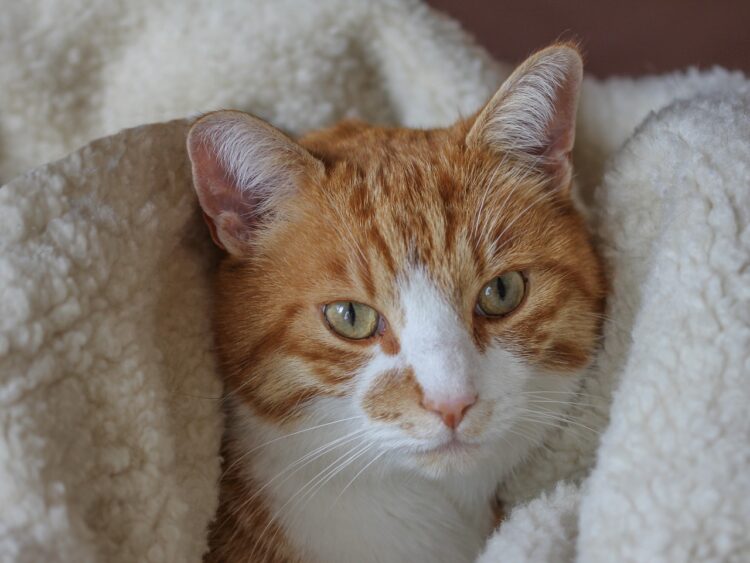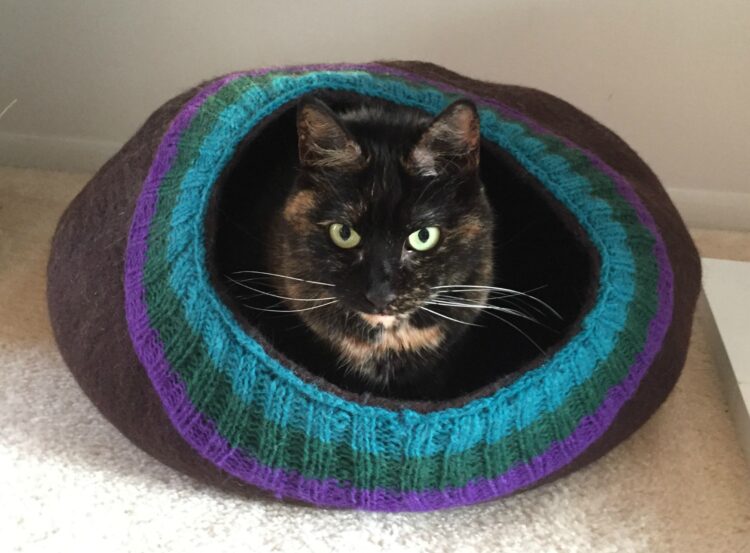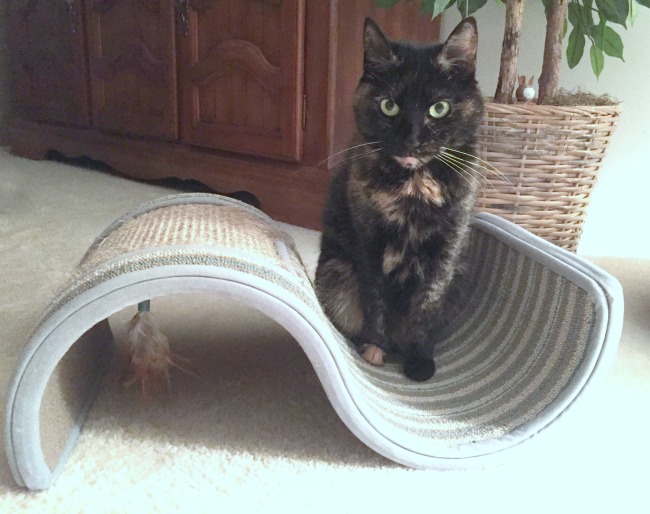
As veterinary medicine continues to advance, many feline illnesses that used to be a death sentence can now be treated. However, aggressive treatment is not the right choice for every cat and every cat parent, which is where palliative care, also known as hospice care, comes in.
What is palliative care?
The World Health Organization defines palliative care as “an approach that improves the quality of life of patients and their families facing the problems associated with life-threatening illness, through the prevention and relief of suffering by means of early identification and impeccable assessment and treatment of pain and other problems, physical, psychosocial, and spiritual.”
I particularly like the emphasis on psychological and spiritual care for the entire family: when a cat becomes terminally ill, it doesn’t just affect the cat, it also affects the cat’s other family members, both human and feline.
Palliative care is an interdisciplinary approach to caring for a terminally ill cat that involves the cat parent, the cat’s veterinarian and staff, and, if needed, a social worker or bereavement counselor.
Why and when to choose palliative care
Palliative care is chosen when
- A cat parent makes the decision not to pursue treatment.
- A terminal illness with no cure is diagnosed.
- Curative treatment failed.
- Long-term care is required.
- Symptoms of the illness interfere with the daily routine of the cat or human caregiver.
The choice of palliative care over other treatments is a highly individualized process. Just because something can be treated doesn’t mean it’s right for your cat, or for you.
The choice of palliative care over other treatments is a highly individualized process. Just because something can be treated doesn’t mean it’s right for your cat, or for you. The decision involves a thorough discussion with your veterinarian about your cat’s prognosis, your goals for your cat, understanding what’s involved with caring for your cat’s particular condition, and your belief system.
Palliative care can include traditional medications such as pain relief, steroids, and fluids, or alternative modalities such as acupuncture, Reiki, homeopathy, and herbal therapy.
Quality of life will be your most important consideration. You will want to monitor pain, hydration status, hygiene, mobility and overall happiness of your cat. Quality of life scales such as this one can help cat parents assess a cat’s health status and help guide the decision whether it may be time to stop treatment.
As your cat’s illness progresses, and if your desire is to avoid hospitalizing your cat, you may need to set up an “at home clinic.” Soft bedding, easy access to litter boxes, clean water, and food in your cat’s favorite part of your home can make this time as comfortable as possible for your cat.
If you make the decision for palliative care, be aware of something often called “caregiver aversion.” Depending on your cat’s temperament, giving frequent or long term medications can cause anxiety for both cat and human. You will need to decide whether risking breaking the bond you share with your cat is worth the additional time the medications may give you.
AAFP/IAAHPC Feline Hospice and Palliative Care Guidelines
The American Association of Feline Practitioners (AAFP) and the International Association for Animal Hospice and Palliative Care (IAAHPC) recently released the 2023 AAFP/IAAHPC Feline Hospice and Palliative Care Guidelines.
The guidelines focus on the evolving field of feline hospice and palliative care, emphasizing communication, ethics, and individualized care. They highlight the importance of comfort care and emotional wellbeing, recognizing the link between physical, psychological, and social needs of the patient.
“I am pleased that the AAFP and IAAHPC collaborated on these guidelines, which underscore the importance of providing the best possible care and support for our feline companions as they approach the end of their lives,” stated Diane R. Eigner, VMD, MBA, CVPM, CHPV, CFV, Task Force Co-Chair. “These Guidelines emphasize the need for empathy, kindness, and understanding during this challenging time for both cats and their human caregivers.”
The guidelines feature:
• A versatile five-step care plan adaptable to both cat and caregiver.
• Introduction of the ‘unit of care’ principle.
• Ethical frameworks and considerations.
• Guidance on comfort care, emotional health assessments, and environmental modifications.
Accompanied by supplemental resources such as an educational brochure, a video, and a questionnaire, these Guidelines offer a comprehensive roadmap for all veterinary professionals who treat cats in their practice.
You can read the full guidelines here.

My experience with palliative care
I chose palliative care when Ruby was diagnosed with advanced kidney disease four years ago. I declined aggressive diagnostics and chose to keep her as comfortable as I could for as long as I could, which ended up being only three short months. You can read all about my experience with Ruby, from diagnosis to letting her go, and the choices I made for her along the way, in my series Ruby’s Last Journey.
Have you chosen palliative care for your cat? Share your experience in a comment.
Image by Gabriele M. Reinhardt/Pixabay








From our experience, palliative care usually involves high doses of steroids, which are likely to kill the cat but will make it feel much better before it goes to the “eternal hunting grounds”.
Our beloved Maya (aka “Florence Nightingale”, as she used to nurse sick and dying cats before she got very ill herself) was put on high-dose prednisolone for her terribly inflamed digestion tract (causing uncontrollable diarrhea). The probable cause for this inflammation was cancer, but to verify this diagnosis would have required painful and stressful examinations costing about $ 8,000.–. And what would we have done with such a confirmed diagnosis? Painful chemotherapy??? No way!!!
Maya felt a little better for 5 days, still enjoyed 1 1/2 slices of Buddig’s turkey ham (her favorite treat) on the 5th day, and was found dead (in her favorite sleeping position) the following morning. She seemed to have had a gentle death. We still mourn her, but it was probably best for her and for us (as we are octogenarians with lots of health problems, several properties, still 17 problem cats and 2 old pet chickens to take care of, and no trustworthy hired help).
What we don’t understand, however: Why would veterinarians prescribe to cats and dogs such astronomically high steroid doses, even when the animals are young and NOT in palliative care??? Our Maya, who weighed only 4 or 5 lbs, had been prescribed 2x daily 5 mg of prednisolone, the same dose I (weighing 165 lbs) had been taken at the same time for inflammation due to a jammed nerve. Younger cats with no terminal illness had also been prescribed such high steroid doses (by different vets) in the past (for broken bones and other curable conditions). And 60 years ago (when I was in my 20s), we had a 10-mos-old purebred German Shepard with hip displasia put on a high-dose steroid (don’t know the exact dose). He was also found dead after a few weeks.
Steroids have their place in feline medicine if used responsibly, especially in end of life situations. At that point, it’s always a case of weighing the risks against the benefits, and quality of life in the short term usually outweighs any concerns about potential longterm side effects. Cats metabolize medications differently, so you can’t compare dosing for cats with dosing for humans.
Thank you for this post. There is so much good information. Cats are our family too and we need to do all we can to keep them comfortable in their final days.
We agree that palliative care is humanly preferable to many currently practiced medical interventions…
AND
we found that DrJudyMorgan had a program to train care providers..
BUT
when we ran the idea past NUMEROUS veterinarians in our area, their response was ZERO…
You need a veterinarian to work with you to cover the modified services for the diagnosed cat having novel symptoms and simpler choices on remediation of even just dental issues…..
So how do we get the vets to work with these ideas?
Thanks for the ”official” standards concept, as we may retry the offers after sending them these…
Else it has to come from cat owners finding out how effective palliative care can be, like when we kept that DawnDonny kitten with paralyzed hips and back legs, and tried the muscular dystrophy therapy for cows, plus vitC and B3 for coping with depressing attempts to walk… In a couple months he was on the move with vitE and selenium, though the vet had advised the hopeless euthanizing route originally…. Sometimes they ”graduate”… TTYL
I’m hopeful, too, that the guidelines will help more veterinarians offer palliative care. I believe it’s a big step forward that two major veterinary organizations combined to issue these guidelines.